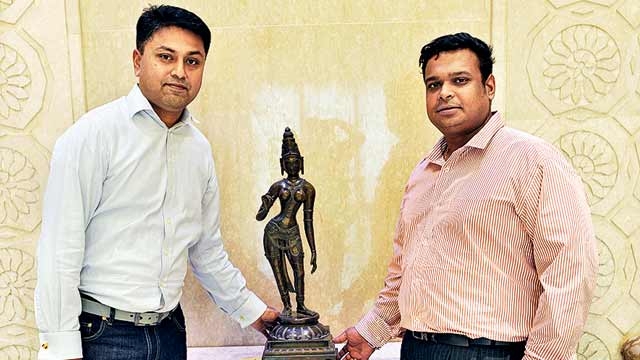prasad1
Active member

IPP claims also to have been behind the high-profile returns of several other stolen artifacts including the Nataraja and Ardhanarishwara statues from Australia and Uma Parameshwari from Singapore.
Tuesday's high-profile return of 200 ancient cultural artifacts by the US to India is the fruit of years of behind-the-scenes leg work by a group of low-profile Indian expats that brought it about.
"Bring Home Our Gods" is the motto of this group called the India Pride Project (IPP) which has been working closely with the US government's Homeland Security Investigations department, which is investigating New-York-based antiques smuggler Subhash Kapoor who was arrested in 2012 and is now in a Tamil Nadu jail. The current tranche of 200 artefacts are among those Kapoor had sold to museums or collectors in the US.
IPP claims also to have been behind the high-profile returns of several other stolen artifacts including the Nataraja and Ardhanarishwara statues from Australia and Uma Parameshwari from Singapore. "Many of the artifacts returned today were part of our research," said Singapore-resident Anuraag Saxena, who along with Vijay Kumar, helms IPP, over email.
IPP's work, revealed Saxena, is to do "provenance documentation and matching as a pro-bono service". That is, IPP helped official investigators and museum authorities in the US establish that the statue they have recovered or the painting in their collection was the same as the one stolen from a temple in India by carefully matching it with old photographs of the statue in its original site found in archives or books.
IPP does this with the help of a bunch volunteers who go about taking photographs of the Indian antiques collections in museums across the world to match with those of stolen artefacts. For instance, the 11th century Ganesh Chola bronze from the Toledo Museum in the US, one of the 200 artifacts being returned, was photographed by Ravi Venogopal, an Indian techie and IPP volunteer in the US, so that it could be compared with images that Tamil Nadu police had put out of statues stolen from the Siva temple in Sripuranthan in 2006.
While IPP is happy with its success, it would like the Archaeological Survey of India (ASI), the nodal agency to retrive stolen artifacts, to be more proactive. "ASI has a huge role to play; and needs to make claims on a specific objects. The ball has started rolling, but there is still a long way to go," said Vijay Kumar.
India has a poor record in the restitution of stolen antiquities -- as per the culture ministry, only 19 stolen objects had been returned since 1976. The CAG report of 2013 indicted the ASI for not taking more "effective steps" such as collecting information about Indian artifacts coming up for sale at international auctions. However, the pace of returns has increased in recent years with six artifacts returned in the last three years. "Unfortunately, India is known globally as a "no-consequence zone". This is because India hasn't yet prosecuted even one significant heritage-criminal successfully. Literally no one," said Vijay Kumar. "Having said that, its not all a lost cause. There are many best-practices from across the world that India can learn from. Setting up a heritage-police, building a national archive; signing bilateral treaties with target countries, and crowdsourcing information and expertise are just some of the things we could do easily."
http://www.dnaindia.com/india/repor...ndia-bring-back-200-ancient-artifacts-2221098
Last edited:
